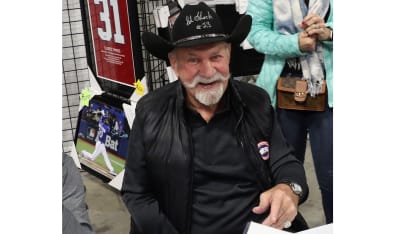After 12 games in his third season, his welcome by now worn out with Rangers coach Phil Watson, he was traded to the Detroit Red Wings on Feb. 5, 1960, with defenseman Bill Gadsby for then-defenseman Red Kelly and forward Billy McNeill. The deal was canceled two days later when Kelly and McNeill refused to report to New York. Finally, on Nov. 7, 1960, Shack was shipped to the Maple Leafs for forwards Pat Hannigan and Johnny Wilson. He was reborn under Toronto coach Punch Imlach, a Tasmanian devil on blades who skated inelegantly around, over and through the opposition, often daring an entire bench to come out to fight.
An equal opportunity antagonist, Shack scrapped with the other team's heavyweights and steamrolled their biggest stars, playing his role of agitator, often with comic relief, to perfection.
He was even celebrated in song with "Clear The Track, Here Comes Shack," a 1966 novelty tune written by broadcaster Brian McFarlane that turned into a huge hit on Toronto radio. By then, Shack was on his way that 1966-67 season to his fourth Stanley Cup championship.
When you turned off the televised Maple Leafs game, you had to duck to avoid being hit by Shack commercials as he bellowed the virtues of, among other things, trash bags, razors, soft drinks and tires. He was loved increasingly for each one that he did, returning the affection by selling Christmas trees in Toronto for charity and attending endless banquets, sharing his colorful stories to the delight of anyone not offended by his salty tongue.
Shack's career took him to the Boston Bruins in 1967, the Los Angeles Kings in 1969, Buffalo Sabres in 1970, Pittsburgh Penguins in 1971 and back to Toronto for two final seasons, 1973-75.
In the decades that followed his retirement, Shack remained hugely popular; he was voted No. 68 on the Maple Leafs' 2016 ranking of their top 100 players of all time.
"Eddie Shack had charisma that was above and beyond for a guy that was probably a third-line left-winger," Wayne Gretzky said in Shack's 2019 book. "People loved him because they could tell that he just played from his heart, and I think that's why fans and grandmothers and mothers loved him to death. They adored him because they enjoyed watching him play. … He's a character, and what you see is what you get."
NHL.com staff writer Mike Zeisberger contributed to this report



